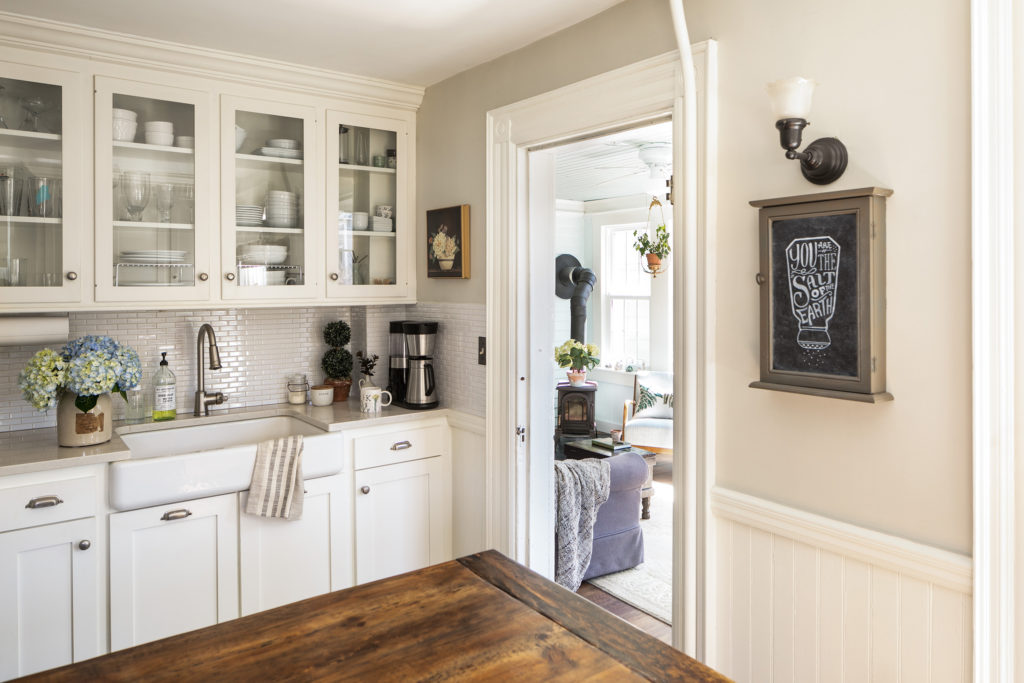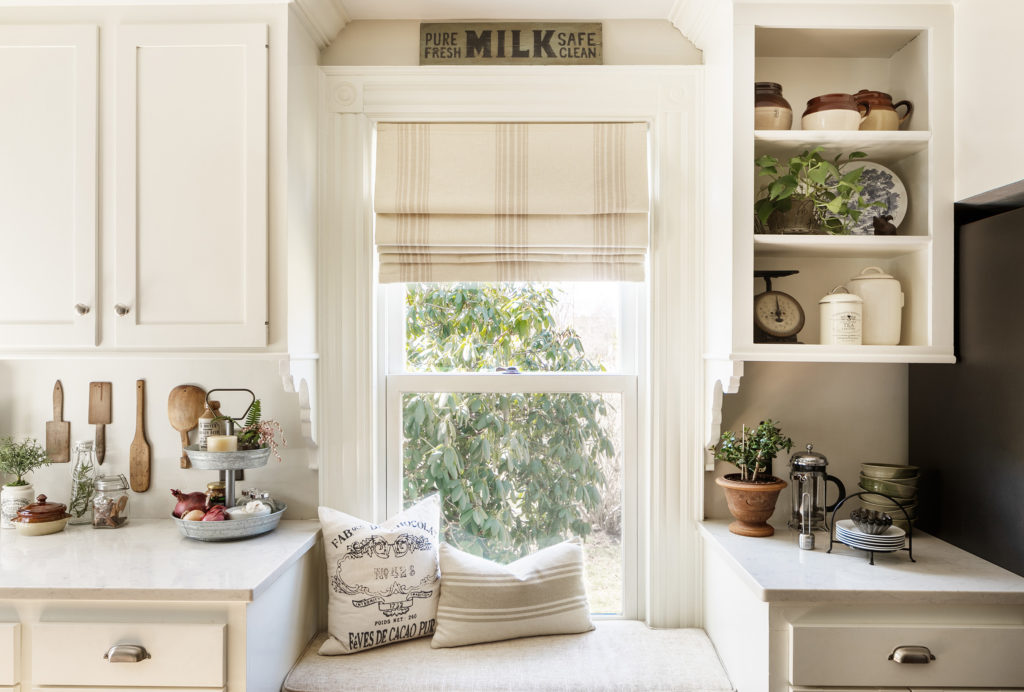A DIY Charmer Blossoms in Kennebunk
The Victorian-era home of two designers has sprouted and grown over the course of 20 years and many renovations.

Kate Aiello, who is at work on home and garden projects for six different clients, is reluctant to call herself an interior designer. “I know that’s a certification,” she says. She goes on to explain that, while she has a degree in graphic design from Rochester Institute of Technology, she hasn’t continued her home and garden education—complementary arms of the design business she got into after she and her husband undertook a post-9/11 exodus from Long Island, New York, back to her home state of Maine—because she is “too busy out there doing the work.”
This is an understatement. For the past 19 years, Kate and her husband, product and industrial designer Justin Aiello, have slowly worked their way through each room of their 1860s Victorian in Kennebunk, which, despite grand details like coffered ceilings, original wood paneling, and stained glass, maintains a modest (there is one bathroom with a shower) and eclectic cottage vibe. Both being designers, the couple refuses to let anyone else touch the house, meaning that the changes have taken place on many weekends over the years—or in stolen moments between work projects. They’ve repaired, renovated, and styled, sometimes only to come back to a room years later and give it another makeover. The kitchen, for example, is currently painted a calming, neutral gray, which is brightened up with plants and other green accents. But it started as aqua, and then changed to pale avocado (to satisfy Kate’s desire for a vintage avocado green fridge that Justin couldn’t quite envision). “Every room is unrecognizable from when we began,” Kate says. “It’s a constant fluid thing.”

The three-season porch is Kate’s favorite “room” in the house.

In the beginning, though, certain renovations couldn’t wait. When Kate and Justin bought the property in 2002, it had been lived in by people who, as Kate puts it, didn’t maintain its integrity. “The shingles needed replacing; there was a lot of rot.” The first thing they did was to fix up the barn so that Justin could transition his business to the upstairs, and after that it was crisis management: “It was like, ‘Oh my gosh, we have to replace the boiler. The yard is overgrown with wild invasive vines, and the gardens are out of control!’” Kate laughs.
Then, like many young couples with their hands already full, a month after they moved in Kate found out she was pregnant. The news prompted them to gut the upstairs bathroom down to the studs. It was a big job, but both designers possess not only the confidence to research and learn as they go but also the necessary hand skills. “Justin designs and builds furniture. He does all the carpentry for us— like the living room coffee table and TV credenza, dining room fireplace, hall built-ins—so we knew we could do things like tiling, that we could control the cleanliness and neatness of those kinds of tasks.”


The kitchen has custom built-in-place cabinetry that the Aiellos preserved; they designed the reclaimed wood island to squeeze a dishwasher into the layout.
The Aiellos did a remodel of the living room three years ago. It took 16 years of consideration before they finally decided to paint the woodwork white (it was previously a “horrible yellowish orange”). Now it feels fresh and uplifting, no longer “funeral home chic.”
One of the things Kate cares most about is color usage, to transition her spaces between color families. The mood she’s in right now is blue and green garden tones, but she chooses colors that pay homage to vintage hues. “Most everything I do honors the fact that this is an old house,” she says, admitting that the task has been easier to accomplish with recent styles trending toward vintage reproduction. “All the colors that are being used right now would have been in a farmhouse in 1910.”
Kate maintains, though, that green has always been her signature shade. It’s the color of the Victorian’s exterior, scraped and painted with the help of her two now-teenaged sons; her design studio’s corporate identity back in 2000 was “eight shades of green”; and, of course, it is the primary color in her vibrant raised vegetable and flower beds. “I get made fun of by people sometimes about all the green, but it’s because I’m a gardener,” she says. “That’s my passion. I always want things to feel alive around me.”


